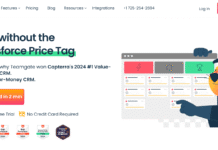Google Gemini Just Made Prompt Engineering Obsolete With One Button
Introduction
In early 2025, Google quietly added a new feature to its Gemini platform that could reshape the way people interact with artificial intelligence. The addition of a small Power Up button inside Google Gemini may appear insignificant, but the implications are enormous. By allowing the system to automatically rewrite and optimize user prompts before processing them, Google has introduced a shift that could render traditional prompt engineering unnecessary.
For years, entrepreneurs, researchers, and content creators relied on prompt engineering to get consistent, high-quality results from large language models. The process required trial, creativity, and precise linguistic control. Now, Google Gemini promises to handle that complexity itself, signaling a major evolution in how AI understands human intent.
This report-style analysis explains how the new Power Up button works, what it means for business users and AI enthusiasts, and how it could influence the future of communication between humans and machines.
The Origin of Prompt Engineering
Prompt engineering became a defining skill during the early rise of generative AI systems. When models like PaLM, GPT, and early versions of Gemini entered the public domain, their responses depended entirely on how questions were asked. The phrasing, tone, and sequence of information could determine whether the output was brilliant or confusing.
Experts developed a structured approach to prompting: specifying context, role, and objectives to guide the model’s reasoning. This technique turned into a valuable professional skill, especially for innovators building in the AI innovation sector.
However, prompt engineering also created friction. Many entrepreneurs and general users found it tedious to master. The gap between those who could communicate effectively with AI and those who could not became wide. This problem led researchers to search for self-optimizing systems, and Google Gemini has now brought that vision to reality.
Inside the Power Up Feature
The Power Up button within Google Gemini operates as an intelligent pre-processor. Before a user’s prompt reaches the reasoning layer, it is analyzed, refined, and restructured for maximum clarity. The system identifies missing context, ambiguous phrasing, or weak logical connections, and automatically rewrites the input into a stronger form.
Technically, this process relies on meta-prompting—a form of internal feedback loop where the model designs its own improved instruction. Unlike previous AI systems that followed user commands directly, Google Gemini acts as an active collaborator. It interprets intent, evaluates wording, and produces a version of the prompt that best aligns with its internal logic and available data.
Early testers report that this leads to higher accuracy and consistency. In tasks such as summarizing documents, writing code, or generating strategic plans, Google Gemini now produces clearer and more relevant outputs even when the original input is vague.
Why It Matters
The introduction of Power Up represents more than a feature upgrade. It signals the beginning of automated communication optimization. For entrepreneurs, this could mean faster workflows and fewer barriers to effective AI adoption. For general users, it eliminates the learning curve of writing perfect prompts.
In practical terms, anyone using Google Gemini can now issue natural commands like “create a marketing roadmap for a new fitness app” without worrying about phrasing. The system refines the instruction internally, applying the precision of prompt engineering automatically.
This democratization is essential for the business world. AI no longer demands technical expertise to produce valuable results. As Google Gemini integrates further into productivity suites and development tools, the technology will allow startups and enterprises alike to operate more efficiently.
However, automation also raises new challenges. Professionals who previously specialized in prompt design must adapt to remain relevant. The focus will shift from crafting instructions to understanding outcomes and aligning AI responses with human goals.
From Engineering to Design
The next stage of this evolution could be described as prompt design. Rather than constructing detailed linguistic formulas, users will define intent, tone, and desired results. Google Gemini handles syntax and structure automatically, while humans focus on strategic direction.
This mirrors past digital transitions. When website builders replaced manual coding, the skill focus shifted from technical layout to design thinking. Now, Google Gemini is moving prompt interaction in the same direction. The role of the human expert becomes conceptual rather than procedural.
For example, a brand strategist can instruct Google Gemini to “develop a campaign aligned with sustainability values and Gen Z preferences.” The model interprets tone, audience, and emotional context automatically. The strategist’s expertise remains vital, but it is applied at a higher cognitive level.
As prompt design replaces manual engineering, new opportunities emerge for educators and consultants. Courses and workshops may soon focus on understanding AI intent, reading reformulated prompts, and designing human-AI collaboration frameworks.
| Prompt Engineering | Prompt Design |
|---|---|
| Focuses on roles, constraints, and chain-of-thought hints | Focuses on intent, tone, guardrails, and measurable outcomes |
| Manual phrasing and linguistic precision | Strategic framing and behavioral direction |
| Requires technical expertise | Requires creative and contextual awareness |
The Technical Foundation of Google Gemini
At the core of Google Gemini is a multimodal architecture capable of processing text, images, audio, and code within the same reasoning layer. The Power Up feature operates within this ecosystem, using contextual embedding to analyze user input.
When a prompt is received, Google Gemini performs several steps:
-
Semantic parsing to detect topic, tone, and potential ambiguity.
-
Logical restructuring to ensure coherent sequencing.
-
Intent mapping to align user goals with known task structures.
-
Reformulation using adaptive templates derived from model self-training.
This process effectively transforms natural human language into a structured internal command optimized for high performance. By combining reinforcement learning and contextual awareness, Google Gemini continues to improve with each user interaction.
The feature demonstrates a move toward self-reflective AI, where the system learns not only from outcomes but also from how it interprets instructions. That internal feedback loop could become the foundation of the next generation of self-optimizing models.
Implications for Startups and AI Builders
For those developing AI-driven products, the impact of Google Gemini is immediate. Projects that previously required extensive prompt libraries can now rely on Gemini’s adaptive layer to handle consistency and tone.
A startup building a content-generation tool, for instance, no longer needs to hard-code multiple prompt versions. Google Gemini can infer the intent behind each task and modify it to fit different formats such as blog articles, ads, or reports. This reduces development time and simplifies scaling.
Additionally, the Power Up feature can improve AI reliability in customer-facing applications. Chatbots, virtual assistants, and automated advisors often struggle when users provide unclear input. By optimizing these prompts automatically, Google Gemini ensures smoother and more natural communication.
The same advantage applies to educational and creative industries. Teachers can use Google Gemini to create adaptive lesson plans without writing detailed instructions. Artists and writers can generate content ideas with minimal effort. The system acts as both interpreter and co-creator, translating human goals into optimized AI commands.
Market Reactions and Industry Trends
Since its quiet rollout, the Power Up feature has already sparked conversation across the AI community. Developers and analysts describe it as a preview of what will define the next stage of generative technology: self-guiding systems.
Several competing platforms are expected to follow suit. Industry observers anticipate that upcoming releases from other AI companies will include similar prompt optimization layers. The race is no longer about model size but about usability and integration.
Google Gemini’s advantage lies in its ecosystem. Because the technology connects with Google Workspace, Android devices, and cloud APIs, the Power Up mechanism could soon appear in every productivity and communication tool. If that happens, millions of users will experience AI collaboration without even realizing it.
This broad accessibility could accelerate adoption across business sectors. From small startups to large corporations, Google Gemini can transform the role of AI from an assistant into a partner that understands goals, not just commands.
Educational Value and Skill Development
The introduction of automated prompting does not eliminate human learning; it transforms it. Those who wish to stay competitive must now learn how to interpret AI behavior. Understanding how Google Gemini modifies prompts can reveal insights into logic, context, and audience alignment.
Entrepreneurs can train teams to read AI-optimized outputs critically. Instead of focusing on writing perfect inputs, they can evaluate whether the AI’s understanding matches business strategy. This skill will define future success in AI-driven industries.
Students and professionals alike can use Google Gemini as a study partner. By comparing original prompts with reformulated versions, they can observe how the system structures reasoning. Such analysis builds both linguistic awareness and digital literacy, preparing the next generation for deeper human-AI collaboration.
Ethical Outlook and Accountability
As artificial intelligence systems evolve, their ability to alter and reinterpret human input brings new ethical considerations. Google Gemini’s Power Up function represents a shift from user-controlled prompting to AI-mediated reformulation. This raises essential questions about authorship, ownership, and accountability.
When Google Gemini modifies a user’s instruction to create a more effective query, it actively participates in meaning construction. The line between what the human asks and what the AI generates becomes blurred. In academic, legal, and corporate settings, that ambiguity can be sensitive. Transparency will be vital to maintain trust. Users should be able to view how their original prompts were changed before results are produced.
To address these concerns, experts suggest that companies deploying Google Gemini in professional environments adopt traceability tools. These would show both the initial and revised prompt versions. Such visibility helps establish responsibility for each output and ensures compliance with communication standards.
Despite these challenges, most analysts see this as a positive evolution. Automating linguistic precision does not remove human agency; it enhances accessibility and reduces technical barriers. Ethical design, rather than restriction, will define how organizations leverage Google Gemini responsibly.
A Shift in AI Accessibility
Google Gemini is already influencing how people approach artificial intelligence. By eliminating the complexity of prompt writing, the model enables users with minimal technical background to access powerful analytical and creative tools. In many ways, it does for language what graphical user interfaces once did for computing: it lowers the threshold of entry.
This accessibility is expected to expand the reach of AI technology across industries. Small businesses can now integrate Google Gemini into customer service, marketing, and research tasks without hiring specialists. Students can explore advanced reasoning tools without studying machine learning. The broader society benefits as communication with AI becomes as simple as conversation.
However, accessibility brings dependency. As Google Gemini becomes the default intermediary for interpreting human intent, users may rely on its reformulation too heavily. Some experts warn that over time, people could lose familiarity with the logic that drives effective reasoning. Maintaining a balance between convenience and understanding will be an ongoing challenge.
This is where education plays a key role. By studying how Google Gemini restructures prompts, users can retain awareness of logic and phrasing while enjoying automation. The technology offers an opportunity to learn from the machine rather than surrender control to it.
Business and Innovation Forecast
The introduction of Google Gemini’s self-optimizing capabilities is expected to reshape business strategy worldwide. In the short term, it reduces operational overhead by simplifying AI communication. In the longer term, it changes how companies design products, train employees, and analyze markets.
Startups in the AI innovation ecosystem can now prototype faster. They no longer need to spend resources on fine-tuning complex prompt sequences. Instead, they can focus on outcome design and customer experience. Google Gemini interprets the intent behind business objectives and adjusts its reasoning automatically. This reduces experimentation time and accelerates product development.
Enterprise organizations will also benefit. Teams that use AI for data analytics or strategic planning can now request insights using natural language. The model’s internal optimization ensures clarity and consistency. As a result, more departments can collaborate with AI systems, fostering a data-driven culture throughout the organization.
From an industry perspective, analysts view Google Gemini’s Power Up button as the beginning of a trend toward conversational AI ecosystems. Future business tools are likely to include adaptive interfaces that refine communication autonomously. This means that within a few years, the distinction between human requests and machine interpretation may disappear completely.
Competition and Market Influence
Google Gemini’s innovation has already prompted competitors to reconsider their priorities. The AI race is shifting from raw model performance to usability. Instead of promoting larger and more complex models, companies are focusing on which system can understand and assist users more naturally.
Open-source projects and independent developers are likely to integrate similar self-refinement mechanisms. The resulting competition could lead to faster standardization of prompt optimization across the industry. In this environment, Google Gemini holds an advantage because of its ecosystem integration with Android, Chrome, and Google Cloud.
The ripple effects could also influence how governments and institutions regulate AI. If models like Google Gemini take an active role in reformulating communication, policymakers may require clearer frameworks for data handling, consent, and traceability. Companies that adapt early to these standards will position themselves as leaders in ethical AI.
At the same time, the public perception of AI may improve. By making interaction easier and more accurate, Google Gemini reduces the frustration many users experienced with earlier systems. Increased satisfaction could boost trust and encourage wider adoption in sectors like education, healthcare, and creative media.
Future of AI Interfaces
Looking forward, experts expect Google Gemini to inspire a new generation of interactive systems based on context-aware communication. The model already adapts to user tone and intent. Future iterations may incorporate emotional awareness and long-term memory to sustain personalized dialogue.
In business environments, such adaptability could revolutionize internal operations. Imagine an AI assistant that not only answers questions but also anticipates needs. Google Gemini is already taking steps in that direction. By analyzing communication patterns, it could soon predict project requirements or highlight potential inefficiencies before humans even ask.
For consumers, this means that the AI of tomorrow will feel less like a tool and more like a partner. Conversations will become more natural, with Google Gemini providing consistent support across devices and platforms. Users will not have to repeat themselves or rephrase tasks; the model will recognize context instantly.
This approach aligns with Google’s broader strategy to embed Gemini into every layer of digital life. From productivity apps to smart home systems, the company envisions a unified intelligence layer that simplifies how people interact with technology. The Power Up feature is only the first step in that evolution.
The Social Dimension of Automation
As automation spreads, the role of human creativity becomes even more valuable. The rise of Google Gemini does not eliminate human contribution but shifts it upward. People move from performing repetitive tasks to directing purpose-driven processes.
Sociologists view this change as part of a larger pattern in technological evolution. Just as industrial automation freed workers from manual labor, AI automation will eventually free knowledge workers from cognitive repetition. The challenge lies in managing the transition responsibly so that societies can adapt rather than resist.
Governments, universities, and businesses will need to invest in retraining and upskilling. Understanding how to collaborate with systems like Google Gemini will soon be as important as learning how to use computers was decades ago. Those who master this partnership will lead in innovation, while those who ignore it risk obsolescence.
The Broader Impact on Innovation
One of the most striking aspects of Google Gemini’s Power Up feature is its potential to accelerate innovation cycles. Because it removes the barrier of linguistic optimization, it allows people to experiment freely with ideas. A designer can prototype a concept, a teacher can build an educational plan, and a startup founder can test market strategies—all through natural conversation.
This speed of iteration encourages creativity and lowers the cost of experimentation. In sectors where time-to-market determines success, Google Gemini’s automation could become a key competitive advantage. The technology enables continuous learning not only for the model but also for the humans who interact with it.
However, rapid innovation also requires caution. As systems like Google Gemini shape information flow, ensuring factual accuracy and ethical use becomes more important. Media organizations and content creators must verify AI-generated information to prevent misinformation. The same transparency that benefits collaboration must also extend to validation.
Conclusion
Google Gemini’s Power Up button is more than an interface enhancement; it represents a transformation in how humans and artificial intelligence collaborate. By taking over the task of prompt optimization, Google has made advanced reasoning accessible to everyone. The shift marks the decline of traditional prompt engineering and the rise of intent-based design.
For entrepreneurs, the benefits are clear: faster innovation, reduced complexity, and greater accessibility. For general users, Google Gemini removes barriers that once limited effective communication with AI. The technology turns abstract systems into relatable tools capable of understanding both goals and context.
Still, this advancement introduces new responsibilities. Users must remain aware of how AI modifies their input, and organizations must ensure transparency and accountability. If managed wisely, Google Gemini’s innovation could define the next era of digital transformation, one where machines not only understand us but also help us understand ourselves.
As the boundaries between human thought and machine reasoning continue to blur, the question is no longer whether prompt engineering is obsolete it is how far Google Gemini will go in shaping the language of intelligence itself.














































